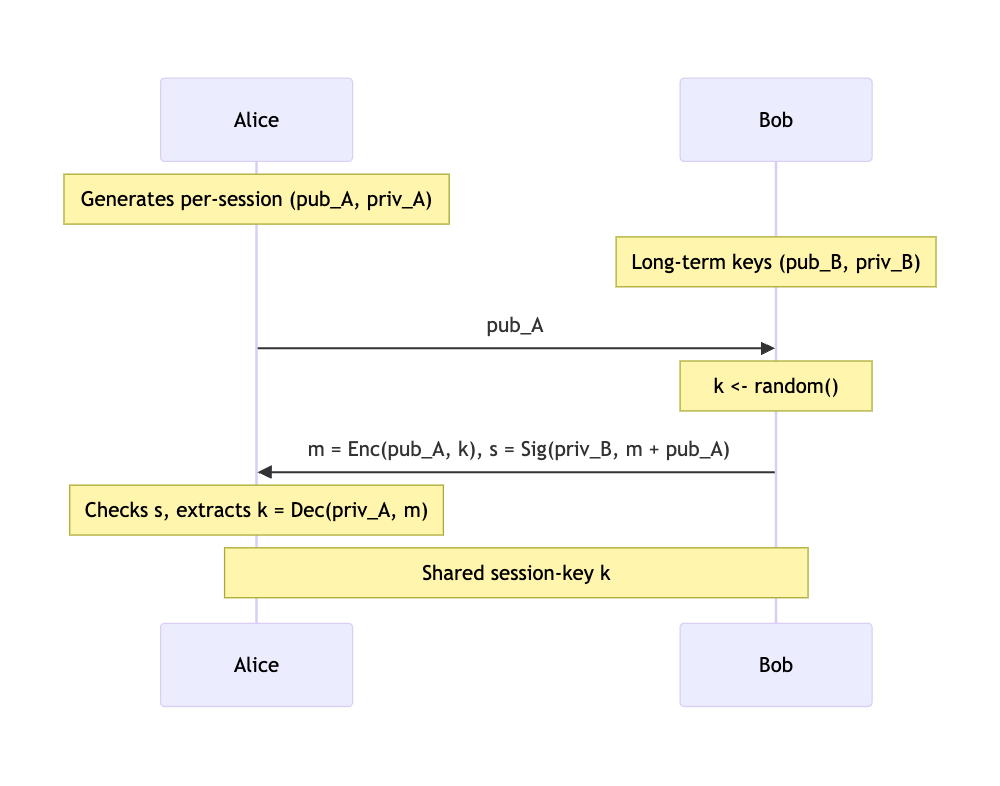This is close to what is accomplished with a Key Encapsulation Mechanism or KEM in e.g. TLS / PQC. That scheme also relies on the ephemeral key pair generation at the client, the communication of the public component to the server and of course the operations using the public key by the server and the private key at the client.
Usually the key encapsulation is followed by one or more KDF calls to calculate the master & session keys though; usually the key is also referred to as "the secret" as it may not directly be used as a symmetric key.
It also closely resembles the use of the previous messages for server authentication, presuming that $m$ consists of the message sent to the server.
That would make the full term a KEM-based AKE. See, for instance, the paper "Modular Design of KEM-Based Authenticated Key Exchange
" that includes this term in the name.
Key encryption or wrapping using RSA is somewhat related, but in that case the key pair resides at "Bob" and Alice encrypts with the static public key. In that case the authenticity is provided by a HMAC using (one of the) established key(s). But that scheme does not provide forward security and has been removed from TLS 1.3.
I don't think you'll find a much more specific term as the specification of $m$ needs to be taken into account. Usually cryptographic algorithms do not go into details such as length encoding of messages being sent. That's up to the protocol, and there is not enough info given to determine one specific protocol.

